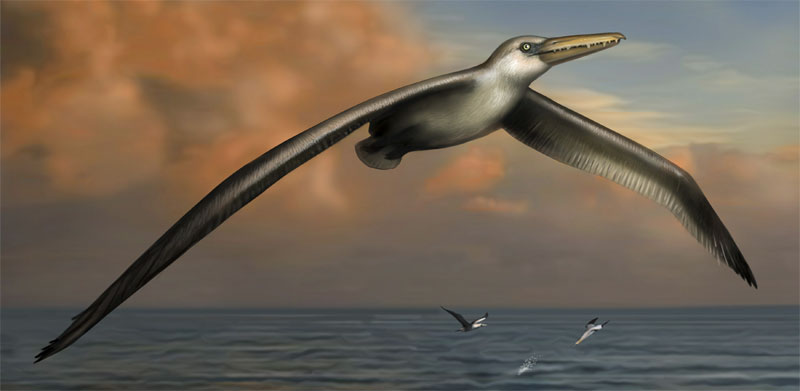AFP/Washington
Fossilized bird bones uncovered in the US state of South Carolina represent the largest flying bird in history, with a wingspan of 6.4 meters (21 feet), according to a study out on Monday.
The Pelagornis sandersi's wings were twice as long as the biggest modern-day seabird, the royal albatross, said the research in the Proceedings of the National Academy of Sciences.
Coupled with its long beak and sharp bony teeth, the enormous wings likely helped the bird master long periods of gliding over water in search of seafood some 25 to 28 million years ago.
However, the bird might have needed some help getting airborne, given that its wings were simply too long to flap easily from the ground.
Scientists believe it may have made a running start downhill, or used air gusts -- much like a hang glider -- to make its way aloft.
Once in the air, study author Dan Ksepka of the National Evolutionary Synthesis Center in Durham, North Carolina, said the bird could probably soar for miles without ever flapping its wings.
"That's important in the ocean, where food is patchy," Ksepka said.
P. sandersi lived after the dinosaurs became extinct but before the first humans are known to have inhabited North America.
The bird's wing and leg bones along with its complete skull were first discovered in 1983 near Charleston, South Carolina, during excavation work for a new international airport.
"The upper wing bone alone was longer than my arm," said Ksepka, recalling that a backhoe was called in to help unearth the bones.
The bone measurements suggest that the bird's wingspan was between 6.06 and 7.38 meters (19.9 to 24.2 feet), according to the PNAS article.
The previous size record holder was an extinct, six-million-year-old bird found in Argentina, named Argentavis magnificens. Its wingspan was estimated at about 21 feet.
The fossils of the P. sandersi shed light on the flying ability of a remarkable bird, but also raise new questions about the group of bony toothed seabirds known as pelagornithids, which disappeared some 2.5 million years ago.
These ancient birds were "remarkably efficient fliers" that were found across all seven continents, making "the cause of their ultimate extinction all of the more mysterious," said the study.

